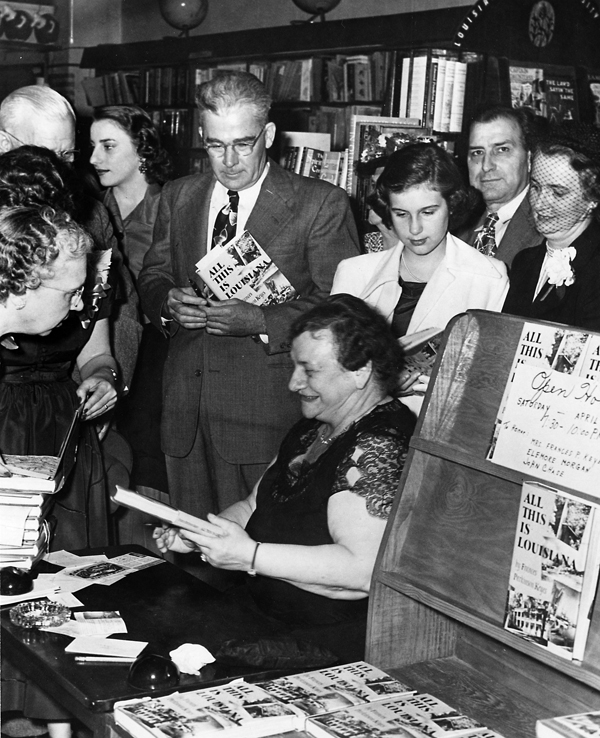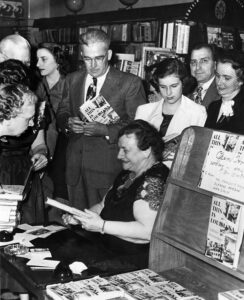Elemore Morgan Sr.
Photographer Elemore Morgan, Sr., made an important visual record of mid-twentieth-century folkways, rural life, indigenous architecture, and landscapes in Louisiana.

Courtesy of State Library of Louisiana.
Black-and-white reproduction of a photograph of Frances Parkinson Keyes and Elemore Morgan, Sr.
Though he had little or no formal training as a photographer, Baton Rouge native Elemore Morgan, Sr., made an important visual record of mid-twentieth-century folkways, rural life, indigenous architecture, and landscapes in Louisiana. Having worked for various forestry organizations, Morgan also produced a valuable collection of images related to the timber, logging, and forestry industries. His work illustrates books by Frances Parkinson Keyes, Harnett Kane, and Hodding Carter, Sr., among others. Two collections of Morgan’s work—The Sixties Ended It: A Book of Architectural Photographs and The Face of Louisiana—were published as well.
Born on October 22, 1903, in Baton Rouge, Elemore Madison Morgan was the son of Loftus Elemore Morgan and Lucia Aldrich. His father, a Canadian immigrant, was a physician, and the family lived on a farm outside Baton Rouge. After graduating from high school, Morgan attended Louisiana State University before working as an architectural draftsman, owning a tire store, and farming, among other things. He married Dorothy Golden and the couple had a son, Elemore Morgan, Jr., a well-known Louisiana painter.
Morgan’s work as a photographer began in the early 1940s. Working for clients and himself, he made pictures of Cajun country dance halls, county fairs, river baptisms, and cotton picking. He also documented the harvesting of tobacco, sugar cane, and Spanish moss. His early photographs were used to illustrate Harnett Kane’s 1943 book, Bayous of Louisiana. In the late 1940s Morgan collaborated with novelist Frances Parkinson Keyes on a project that allowed him to travel and photograph throughout the state. Featuring Morgan’s photos and Keyes’ text, All This Is Louisiana appeared in 1950.
In 1951, Morgan took a job as photographer for the Louisiana Forestry Association, and his work took him to central and northern Louisiana. Morgan’s interest in rural life propelled him to photograph log cabins, boat building, and other aspects of folklife connected to the lumber industry for the trade association’s magazine, Forests and People. He also made photographs for the Louisiana Forestry Commission. In the late 1950s, Morgan published The Sixties Ended It: A Book of Architectural Photographs. Morgan worked as a commercial photographer until his death on April 10, 1966. A second collection of photographs, The Face of Louisiana, was published in 1969 and featured text by Charles East. His photographs are in the permanent collections of the Historic New Orleans Collection, Louisiana State University, the University of Louisiana at Lafayette, and the Lafayette Natural History Museum. In 2006, the Ogden Museum of Southern Art mounted an exhibition of his photographs along with photographs and paintings by his son, Elemore Morgan Jr.
